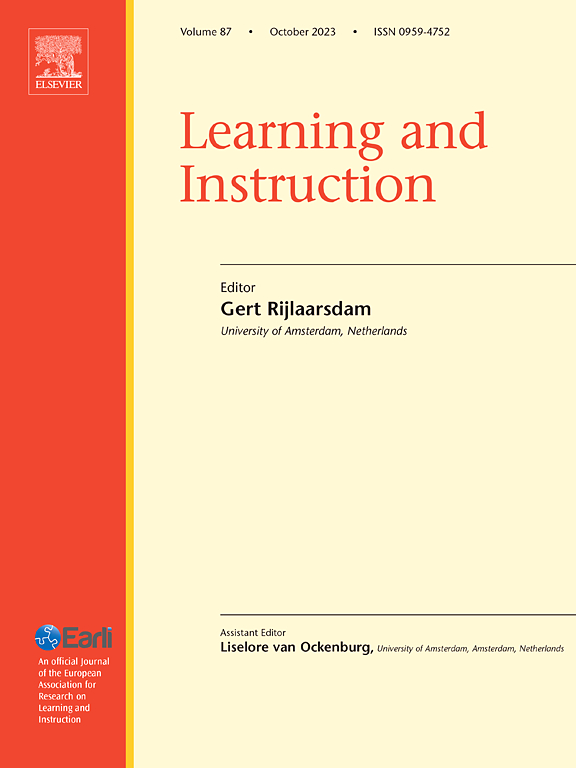How do teachers process technology-based formative assessment results in their daily practice? Results from process mining of think-aloud data
IF 4.7
1区 教育学
Q1 EDUCATION & EDUCATIONAL RESEARCH
引用次数: 0
Abstract
Background
Technology-based formative assessments are considered promising in terms of reducing teachers’ workload and providing validity advantages but little is known how teachers use the assessment results to inform their instruction in their daily practice.
Aims
We explored how teachers process technology-based formative assessment results using think-aloud methodology in an ecologically valid setting.
Sample
Forty-eight experienced in-service teachers participated in the study.
Methods
We asked the teachers to verbalize their thoughts while they processed students’ formative assessment results as they usually do. Screencasts of the verbalizations and assessment results were recorded. Based on these, trained raters coded the main steps of processing and which specific aspects of the results were noticed based on a deductive-inductive coding scheme. Cluster analyses were applied to explore differences among teachers, and process mining was conducted to explore the main processes.
Results
We found four main steps: noticing results, comparing with personal perspective, analyzing errors and constructing instructional implications. Relative durations of these steps vary substantially among teachers. Cluster analyses indicate that processes were differentiated according to the complexity of summarizing and building relationships between single data points. The fitted process model revealed low dependency values in general and indicates that noticing results on its own seemed to be insufficient for constructing instructional implications.
Conclusions
This study generates the hypothesis that analyzing errors and comparing results with the personal perspective are important for teachers for next instructional decisions.
求助全文
约1分钟内获得全文
求助全文
来源期刊

Learning and Instruction
Multiple-
CiteScore
11.30
自引率
4.80%
发文量
109
期刊介绍:
As an international, multi-disciplinary, peer-refereed journal, Learning and Instruction provides a platform for the publication of the most advanced scientific research in the areas of learning, development, instruction and teaching. The journal welcomes original empirical investigations. The papers may represent a variety of theoretical perspectives and different methodological approaches. They may refer to any age level, from infants to adults and to a diversity of learning and instructional settings, from laboratory experiments to field studies. The major criteria in the review and the selection process concern the significance of the contribution to the area of learning and instruction, and the rigor of the study.
 求助内容:
求助内容: 应助结果提醒方式:
应助结果提醒方式:


